The content of the article
Traveling, both in public and in private vehicles, can turn out to be a real test for the child and his parents. You can not concentrate on the road if the baby is motion sick. Moreover, thoughts about the upcoming trip may be overshadowed by memories of unpleasant moments associated with the condition of the child. Of course, if you have your own car, you can make a stop and go out into the fresh air if necessary, but it is much more difficult to take these steps in public transport.
Experts believe that motion sickness is not a chronic disease, but a real protective physiological reaction of the child’s body due to the fact that the coordination system of the vestibular apparatus is not sufficiently developed. Therefore, unpleasant sensations during the trip are a normal reaction of the body to pitching. Attacks of nausea, vomiting - this is a severe irritation of the central nervous system by incoming impulses from the vestibular apparatus.
The most common triggers for motion sickness while driving a car:
- The preference for a particular driving style by the driver.
- The design feature of the car.
- The specifics of the road surface (bumps contribute to more motion sickness).
- Too sharp turns, often the driver does not have time to slow down the pace.
- Change of speeds, especially at the time of overtaking and entry to the rise of the road.
- There are frequent cases when a child is cradled even in a traffic jam - the car often starts moving and stops again.
During the trip, the child can get sick both in the car and in public transport. In particular, this applies to the very first trips of a small passenger and complications during the movement (getting into the turbulence zone, a storm on the water). Often, a child cradles while staying on a swing or carousel. Fortunately, in the process of growing up, this nuisance passes, which allows you to enjoy trips without any complications in terms of well-being.
Symptoms or how to recognize that the baby is sickness?
If the child is already talking, he will certainly tell his parents about his poor health. If age does not allow, it will be difficult for adults to understand what is happening with a small passenger. It is at these moments that the information that was developed by specialists studying the specifics of this state of the child over a long period of time will help.
There are three types of response that can be observed in a child during motion sickness:
- With the emotional type of response, fear, a state of panic are especially pronounced, sometimes it comes to manifestations of inadequate enthusiasm, euphoria, causeless laughter, hysteria.
- With the vegetative type: a red or pale face in a child, increased sweating, a sudden attack of nausea, vomiting, increased salivation, loss of consciousness for several minutes.
- With the third type of response, muscle contractions can be distinguished: gait instability, lack of balance.
The most common manifestations of motion sickness are discomfort in the stomach, an attack of nausea, and vomiting. Heart rhythm disturbance or general weakness may be present. In most cases, there are several symptoms, not the whole complex.
Actions for motion sickness of a child in a car and other vehicles
The most important thing is not to panic and proceed to the following steps to help the child cope with an uncomfortable condition:
- Take special care of the early symptoms of motion sickness - sudden cold sweat and loss of appetite are observed before an attack of nausea and vomiting. When an alarm occurs, it is worth stopping the movement. During the trip by car, it is best to make a short stop, go out and breathe in fresh air. During a flight on an airplane - transfer the child to the porthole so that he is distracted by examining objects. During the trip by car, you can put the child on the seat and put a cold, damp cloth on his forehead. Symptoms will stop fairly quickly, the condition will stabilize and after fifteen minutes you can hit the road again.
- When traveling by car, it is best for the child to peer into the distance to concentrate on objects located at such a short distance. They will make you plunge into the illusion that the movement occurs directly on them. This will get rid of the alarm signals that enter the brain.
- Do not forget that during the trip the child is in dire need of fresh air. You can resort to using the air conditioner or slightly open the window on the side of the small passenger. When making a trip on a ship, you can go on deck to alleviate the condition of the child.
- For a successful trip, it is necessary for the child to sit in a place in the middle of the bus. This nuance should be taken into account during the purchase of tickets in order to make a planned trip. Rear seats will contribute to motion sickness, while front seats cannot be trusted with safety. Aspects regarding other means of transportation: train car closer to the engine, upper deck of the vessel near the middle, place near the wings of the aircraft. The child should look directly at the high seat and watch the road through the window.
- You can distract the child. Often, the state of motion sickness occurs due to psychological reasons, which is why in the process of moving with a child it is better to sing, talk and be distracted by the views outside the window. Do not give your child a toy, tablet and book, as this will contribute to disorientation.
- Feed your baby before traveling if they can already eat solid foods. Starvation may increase the onset of nausea. At the same time, everything is quite individual, and therefore it is worth checking which option is suitable for the child so as not to run into motion sickness.
- You can try to plan a trip, guessing it by the time of daytime sleep of the child. This will avoid the appearance of trouble during the trip. If the little passenger is not used to sleeping, you can try to persuade him to take a nap for some time along the way.
- It is worth minimizing the child’s actions. He should be as calm as possible, his head should spin as little as possible. Do not forget about the child seat for the car.
- You can resort to using a specially designed wristband from motion sickness, which, as many people say, is able to suppress an attack of nausea. You can use the placebo effect - tell your child that this accessory is designed to help during the trip. This may be enough to avoid discomfort. When buying a bracelet, read the instructions for appropriate age for the child.
- Take care that there are no pungent or unpleasant odors. They can trigger an attack of nausea. It can also occur due to the high temperature regime installed in the car.
- In case of vomiting, it is necessary to give the baby as much fluid as possible to avoid dehydration. You can also gently rub the palms and earlobes of the child’s ears to alleviate his condition. Citrus flavored lollipops can reduce discomfort.
Prevention of motion sickness of the child
For children over two years of age, medicines for motion sickness are dispensed over-the-counter.They are chewable tablets or syrup. A doctor's recommendation is needed before proceeding with their use. Among the side effects are: drowsiness, irritability, dry mouth, blurred vision and constipation.
To be safe and to avoid the appearance of discomfort, you should take on the road a package of wet wipes, as well as replaceable clothes.
You can resort to a series of exercises to train the vestibular apparatus: dancing, cycling, swimming, riding on a swing and carousel, special exercises that a specialist can recommend.
Video: what to do if the child is rocking in the car

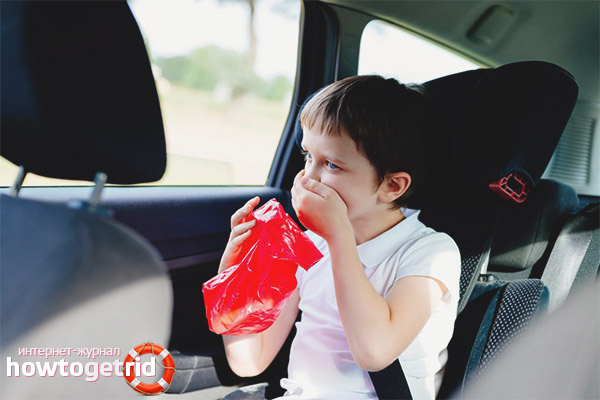
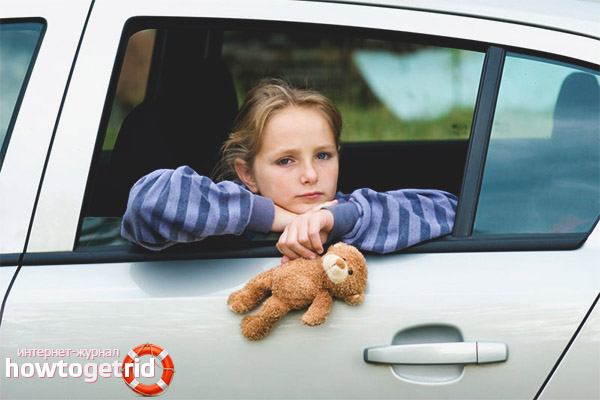

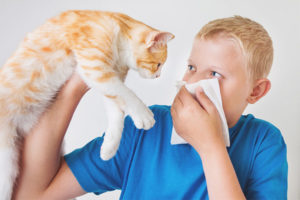
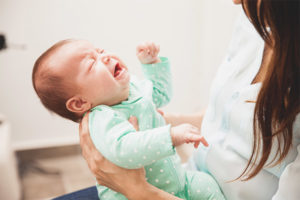

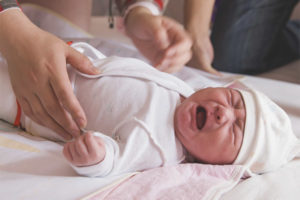
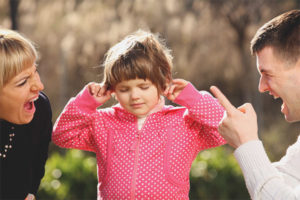

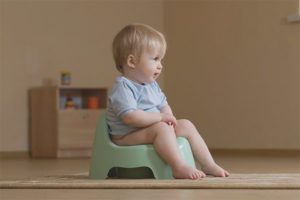
Submit